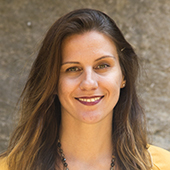But most importantly, experience designers do all of this because they fundamentally care about outcomes and have empathy for those who will experience those outcomes. And it is empathy, not just for the customers for whom they design, but also for the organizations and executives they work for. They design structures, build teams, create processes, and use empathy to meet colleagues where they are, as they lead their teams to successes that they’ve built on the foundation of user experience.
There is a global market shift as consumers demand more value, meaning, and positive experiences in their lives. They want hard things to become easy; sad things to become more hopeful; complicated things to work simply; and frightening things to become playful. There is emerging demand for experience designers—and their qualities—that I believe is being driven by organizations’ looking to designers and the design process in an unprecedented way. Experience designers are helping to lead this change through creative new approaches, by driving innovation to meet and exceed customer expectations, and by placing their experience at the core of product and service development, enabling them to remain viable in a changing market.
Now, as experience strategy is evolving to align with business strategy and, in some cases, even drive business strategy, perhaps it is the experience designer who has the empathy not to judge the current paradigms and the courage to try to shift their organizations’ thinking, working outside current paradigms to design with intention and create something new.
When self-motivation drives design intention, our output is more of the same, and we can never innovate anything revolutionary or truly disruptive to the human experience. Better versions, faster versions, smarter versions, but still heading in the same direction. Organizations that innovate to drive revenue and create more profit won’t necessarily transform the customer experience.
And, as designers, operating in the same paradigm, if our personal motivations are to design for our selves, to compete, to make more money, to get recognition, to be the best in our field, to be the best in our industry, to be better than the competition, or to make new technology for the sake of being better or being first, we’ll only ever produce better versions of much the same things. However, if we operate from a place of inspiration, which goes beyond self-motivation and competition, we can let our intuition and true empathy for human experience guide us to truly connect with humanity. Then, we can tap into potential innovations that would lead to a positive future experience.
